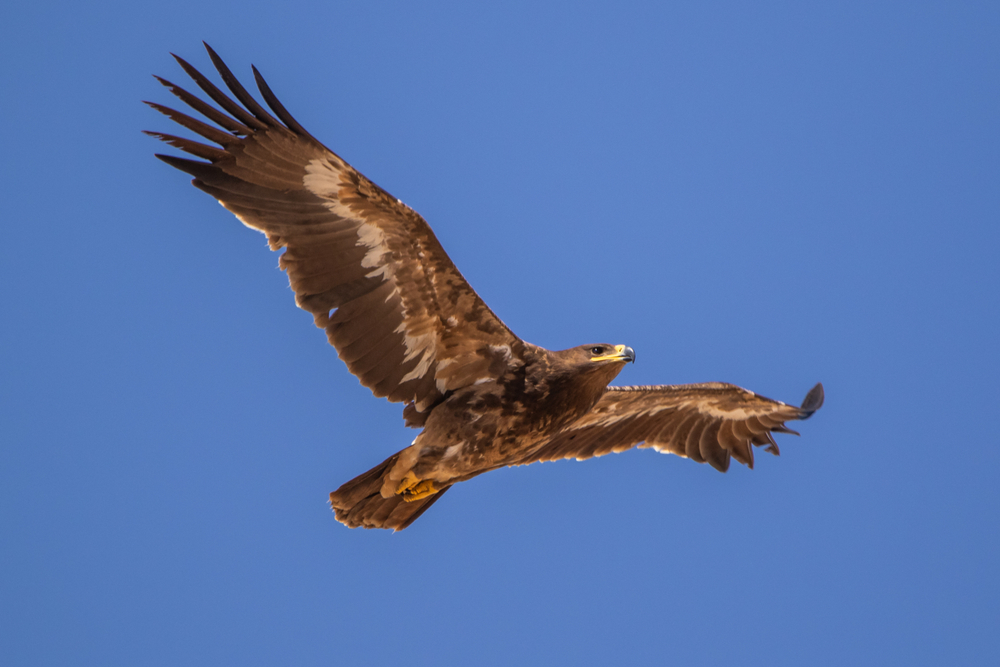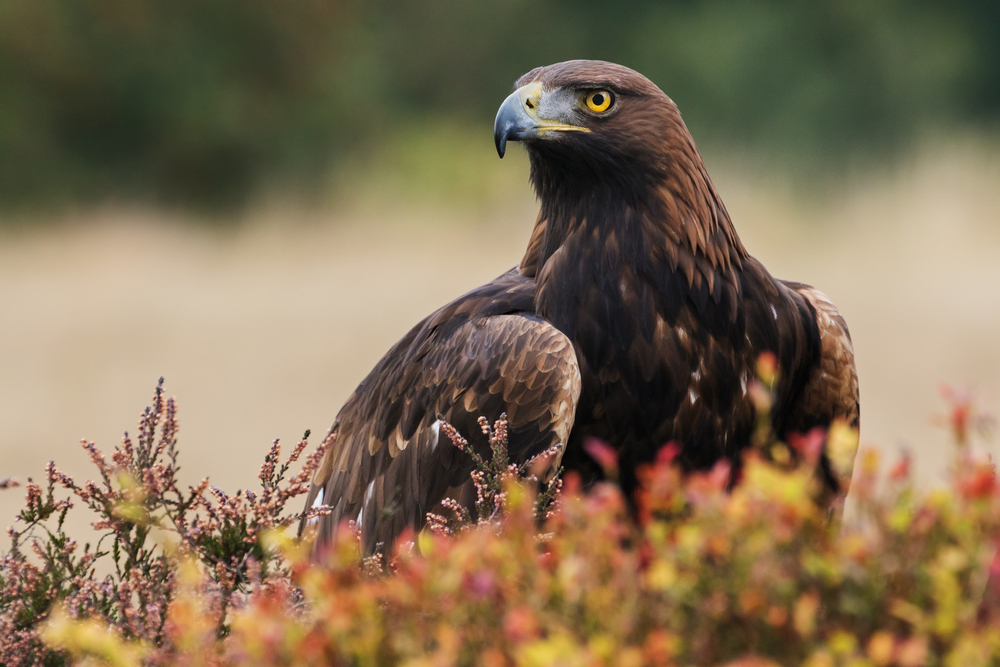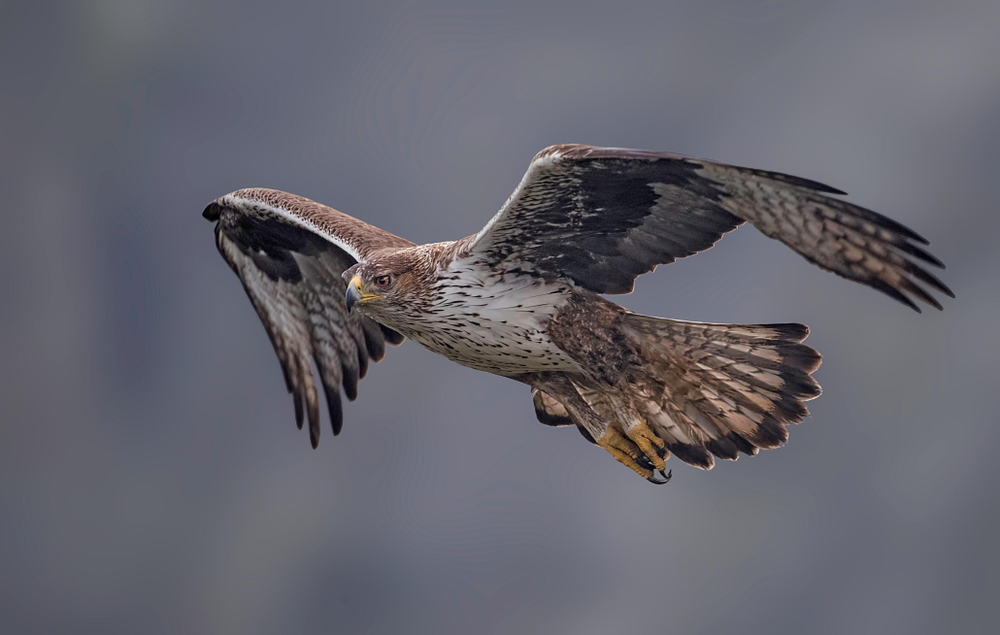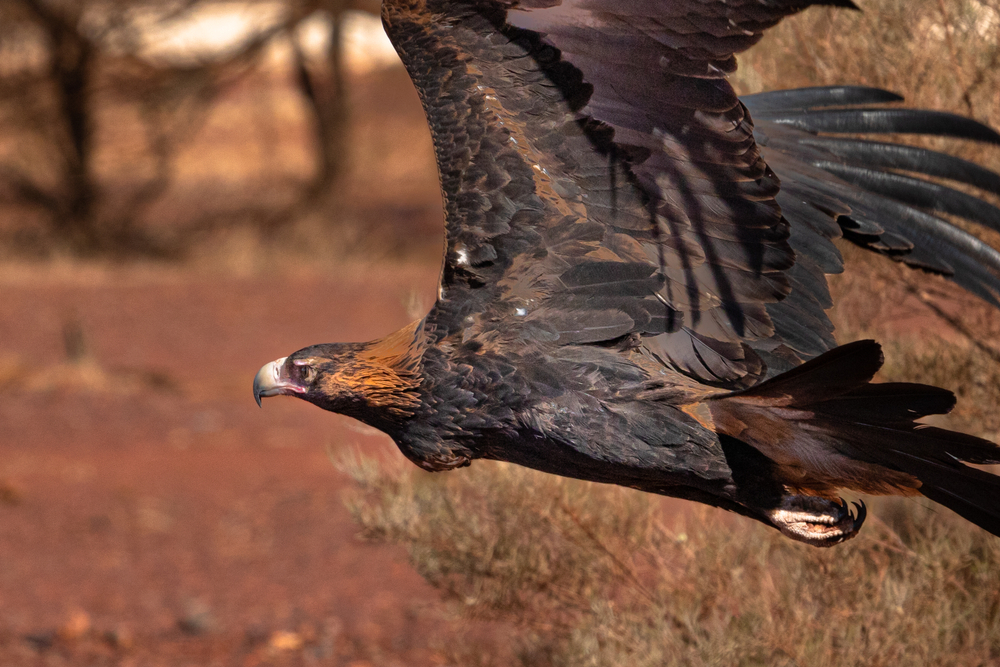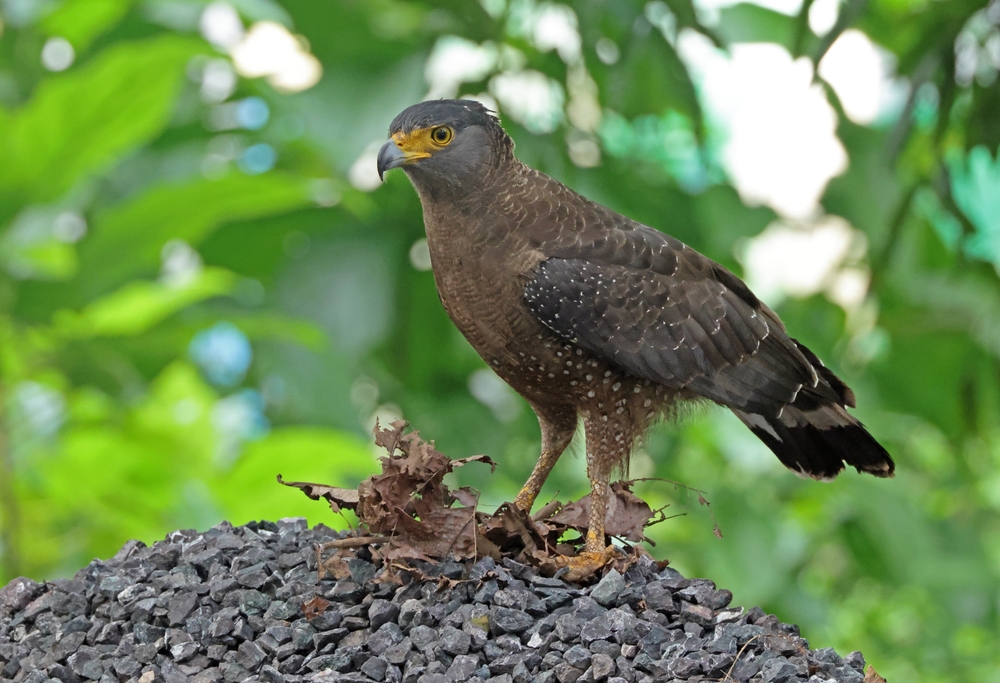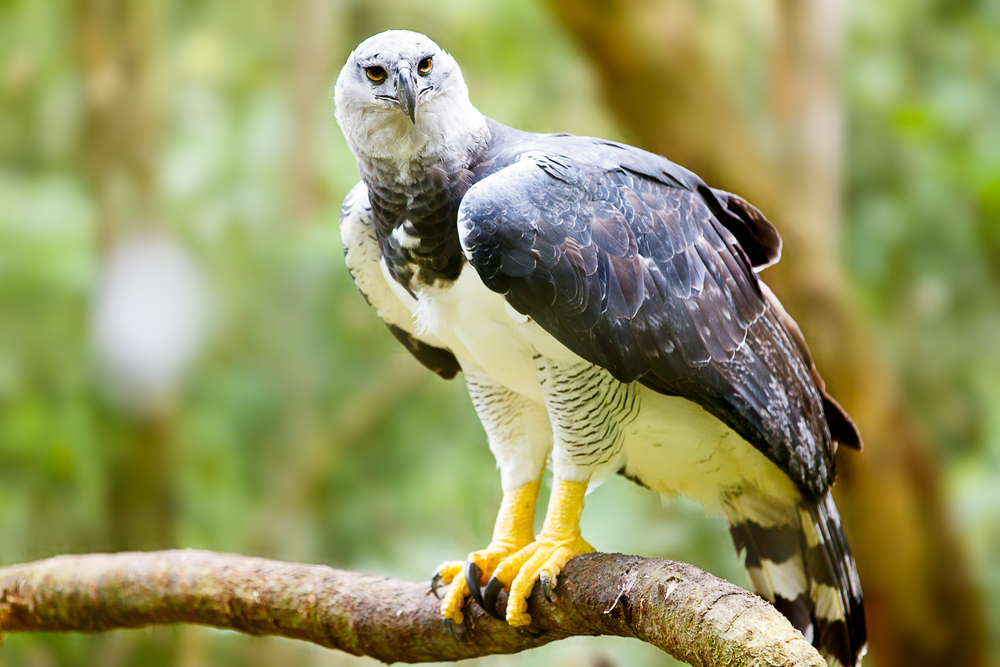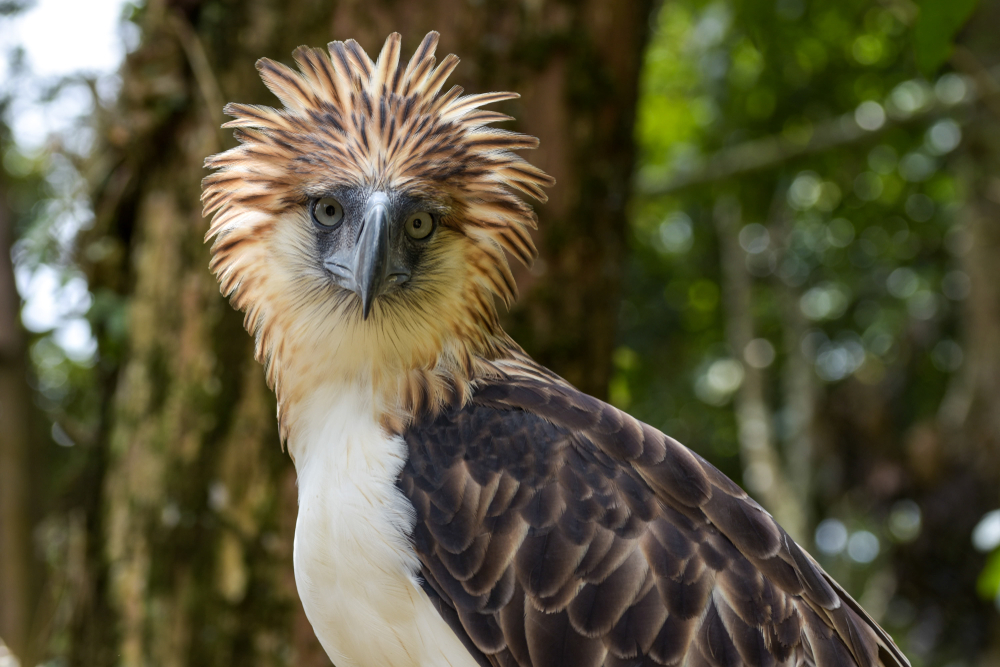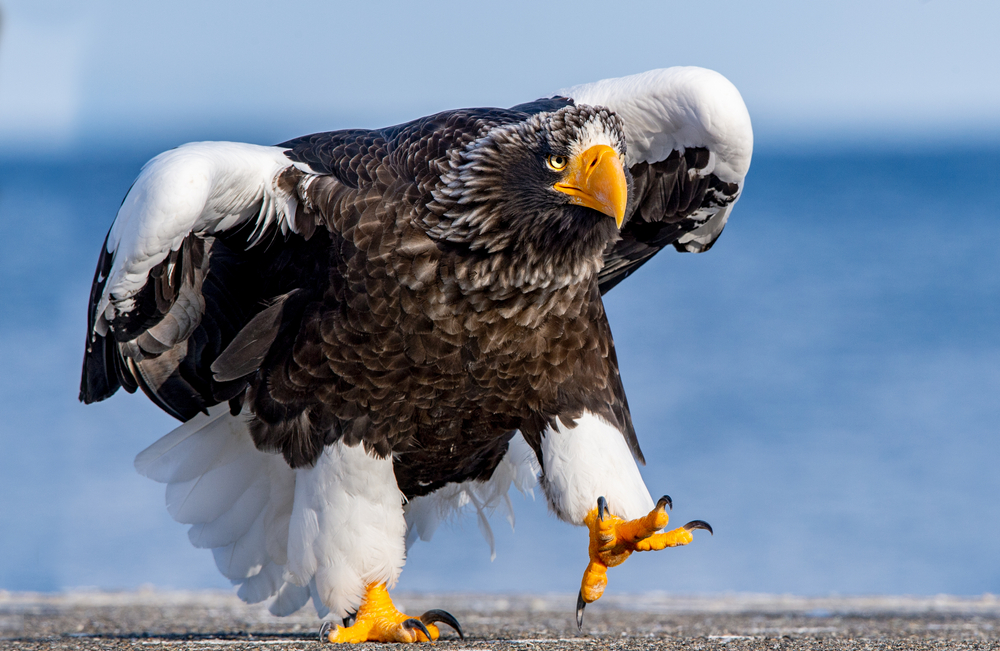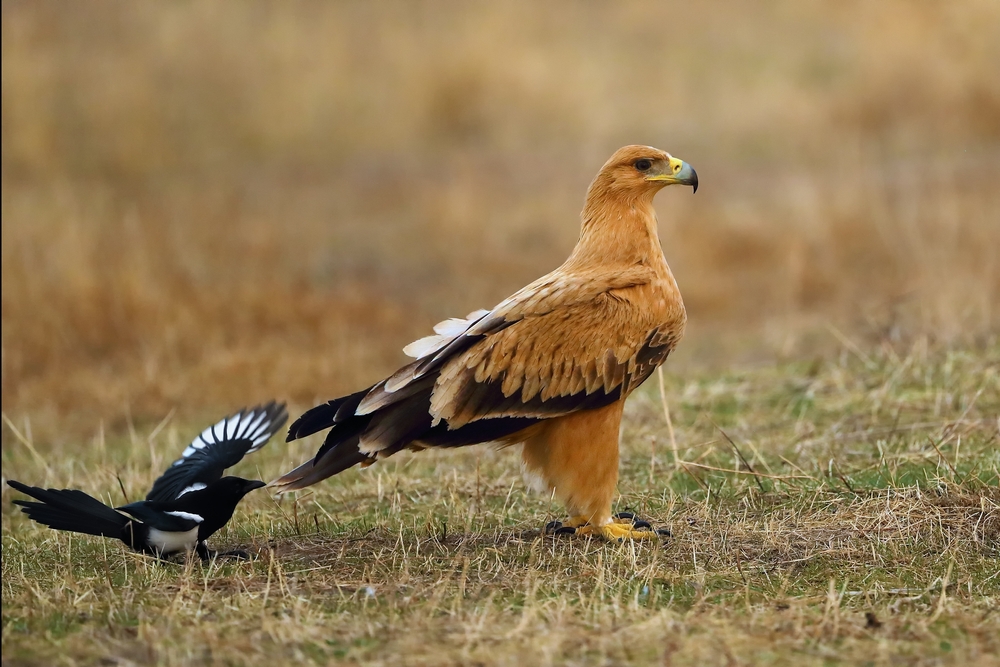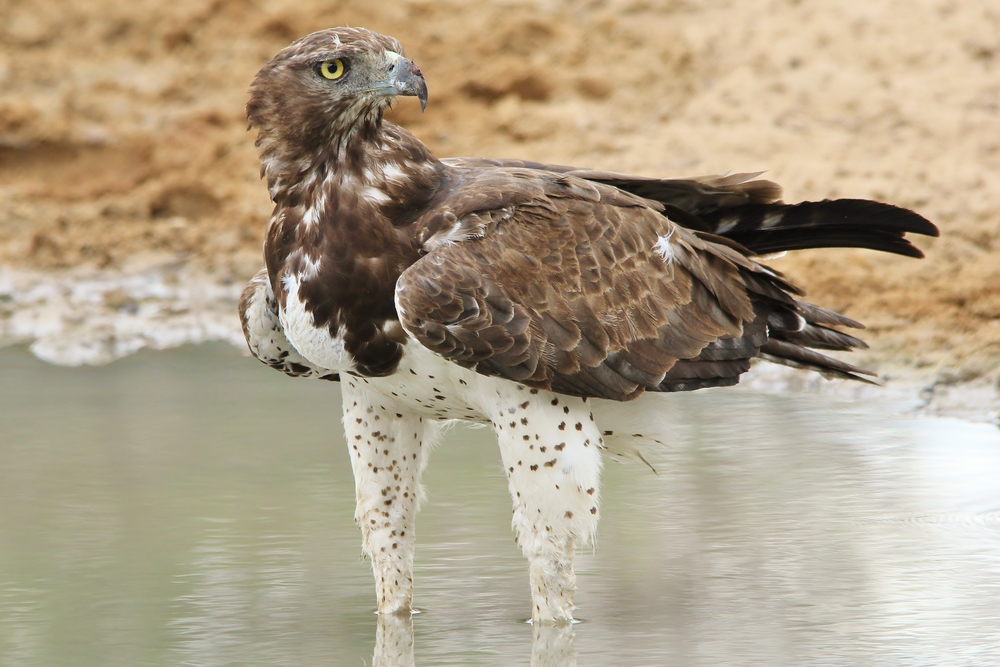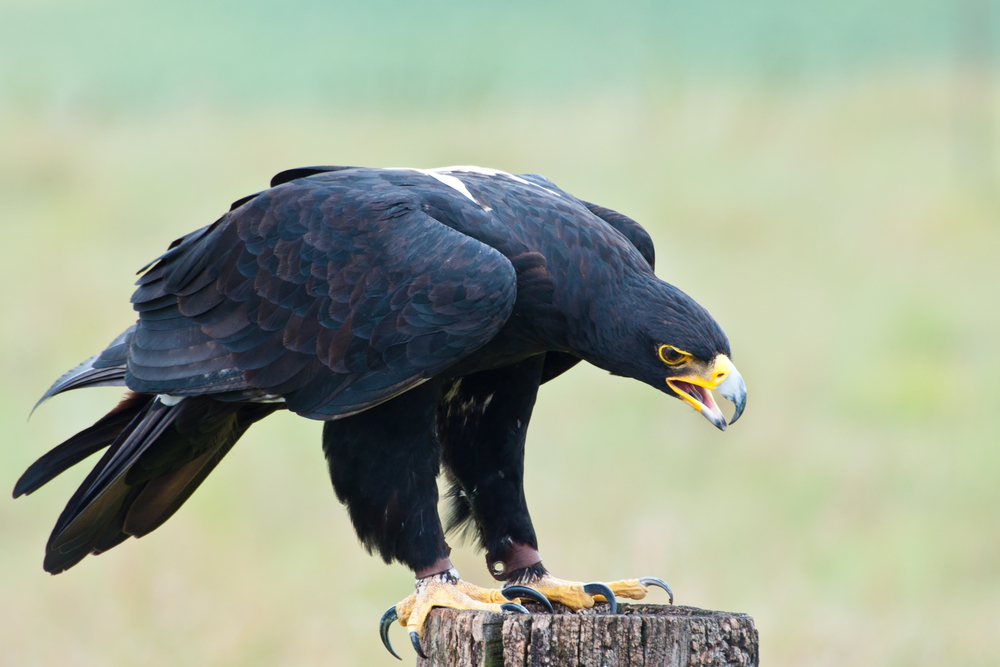The Steppe Eagle is closely related to the Tawny Eagle (Aquila rapax), and until recently, the two were even considered a single species. Both share similar habitats and appearances, but genetic studies confirm them as distinct species.
About
The Steppe Eagle is a large migratory raptor that inhabits vast open landscapes across Eurasia, particularly steppes, deserts, and semi-arid regions. Known for its adaptability and long-distance migrations, it breeds in Eastern Europe, Central Asia, and Mongolia before traveling thousands of kilometers to wintering grounds in Africa, the Middle East, and South Asia. Its powerful build, long wings, and steady soaring flight make it well-suited to its wide-ranging lifestyle.
Steppe Eagles measure 60–81 cm (24–32 in) in length, with a wingspan of 165–215 cm (5.4–7 ft). Their plumage is generally dark brown, though juveniles show lighter patches on the wings and nape. They are opportunistic hunters, preying on small mammals such as ground squirrels, hares, and rodents, while also feeding on birds, reptiles, and carrion. Their reliance on rodent populations makes them ecologically important for controlling pests across grassland ecosystems.
Breeding occurs in open steppe habitats, where pairs build large nests of sticks on the ground, cliffs, or low trees. The female lays one to three eggs, and incubation lasts about 45 days. Usually, only one chick survives to fledge after around 60 days, as sibling competition is common. Steppe Eagles are known for their strong fidelity to nesting sites, often returning to the same territory year after year. In the wild, they may live 16–20 years.
The scientific name of the Steppe Eagle is Aquila nipalensis, and it belongs to the family Accipitridae, which includes hawks, kites, and other eagles. Once common across its range, the species has suffered sharp declines due to habitat loss, poisoning, electrocution from power lines, and reduced prey availability. It is currently classified as Endangered on the IUCN Red List. Despite these threats, it remains one of the most iconic raptors of the Eurasian steppes, symbolizing the vast grassland wildernesses it calls home.
Physical Characteristics
The Steppe Eagle (Aquila nipalensis) is a large migratory eagle of the open grasslands and steppes of Eurasia, recognized for its adaptability and impressive soaring ability.
Plumage:
Adults are generally dark brown to blackish-brown overall, with lighter brown to sandy tones on the nape and wing coverts. They often show a distinct pale throat patch. Juveniles are paler, with sandy to buff underparts and conspicuous white bands on the wings and tail, which fade as they mature.
Head and Face:
The head is large, with a strong, hooked beak that is yellow at the base with a dark gray tip. Their eyes are deep brown to amber, giving them a stern expression.
Body and Wings:
Steppe Eagles are heavily built, with long, broad wings and a relatively short tail. In flight, they appear rectangular-winged, with distinct pale panels visible on the upper and underwings in younger birds. Their long primary feathers are splayed like “fingers,” aiding in soaring.
Size:
-
Length (Body): 24 to 32 in (60 to 81 cm)
-
Wingspan: 63 to 84 in (160 to 215 cm)
-
Tail Length: 10 to 13 in (25 to 33 cm)
Weight:
-
Males: 5.5 to 8.8 lbs (2.5 to 4 kg)
-
Females: 6.6 to 11 lbs (3 to 5 kg), with females noticeably larger.
The Steppe Eagle’s dark plumage, pale throat, long rectangular wings, and migratory nature make it a distinctive and powerful raptor of open landscapes.
Reproduction
The Steppe Eagle follows a breeding cycle that is strongly tied to the seasonal abundance of prey in its steppe and semi-desert habitats.
1. Mating and Courtship:
Steppe Eagles are monogamous, usually forming long-term pair bonds. Courtship involves soaring displays, calling, and talon-grappling flights. Pairs often return to the same breeding territory year after year.
2. Nesting:
Nests are built on the ground, low cliffs, or occasionally in small trees. Constructed from sticks and lined with grass, dung, or feathers, nests measure about 3 to 5 feet (1 to 1.5 m) across. In open steppe landscapes, nests are often placed on slight elevations for better visibility.
3. Egg-Laying:
The female lays 1 to 3 eggs, usually in April or May. The eggs are white with reddish-brown blotches.
4. Incubation:
Incubation lasts about 39 to 45 days, with the female performing most of the incubation while the male supplies food.
5. Raising Chicks:
Chicks hatch covered in white down and are closely brooded by the female in the first weeks. Both parents bring prey, with the female feeding the young by tearing food into smaller pieces. Sibling rivalry is common, and often only one or two chicks survive to fledging.
6. Fledging and Independence:
Young Steppe Eagles fledge at around 55 to 65 days of age. They remain dependent on their parents for several more weeks before dispersing.
The Steppe Eagle’s reproductive strategy—ground nesting, small clutch sizes, and intense parental care—is well suited to the open steppe environment but makes nests vulnerable to predation and human disturbance.
Lifespan
The Steppe Eagle is a long-lived raptor, though its survival is closely tied to safe migratory routes and abundant prey across its vast range.
Lifespan in the Wild:
In natural conditions, Steppe Eagles typically live 16 to 20 years, with some individuals reaching up to 25 years. Mortality is highest during the first years of independence, especially during long migrations between breeding and wintering grounds.
Lifespan in Captivity:
In zoos or rehabilitation centers, Steppe Eagles may live 30 to 40 years, benefitting from consistent food sources, protection from hunting, and veterinary care.
Threats to the Steppe Eagle:
-
Electrocution and Collisions: Power lines and wind turbines are major causes of mortality along migration routes.
-
Poisoning: Secondary poisoning from pesticides and poisoned carcasses affects populations.
-
Habitat Loss: Agricultural expansion reduces suitable nesting and hunting areas.
-
Persecution: Occasionally hunted or trapped, especially in parts of its wintering range.
-
Food Scarcity: Declines in rodents and small mammals impact breeding success.
Care and Protection:
Conservation measures focus on insulating power lines, protecting nesting grounds, reducing poisoning, and monitoring migratory populations across their vast Eurasian and African range.
The Steppe Eagle’s long lifespan but high juvenile mortality and vulnerability during migration highlight the challenges faced by this wide-ranging raptor.
Eating Habits
The Steppe Eagle is an opportunistic predator and scavenger, with a diet that reflects the open grasslands and semi-deserts it inhabits.
Diet:
Their primary food source consists of small to medium-sized mammals, especially rodents such as ground squirrels, gerbils, voles, and hares. They also hunt birds, reptiles, and insects, particularly grasshoppers and locusts during seasonal swarms. Steppe Eagles readily scavenge, feeding on carrion from livestock and wild animals.
Hunting Strategy:
Steppe Eagles are both active hunters and scavengers. They patrol grasslands in soaring flight or perch on elevated spots to detect prey. They are also drawn to fires, where they catch fleeing animals, and to roadsides, where roadkill provides an easy meal.
Killing Technique:
Small mammals and birds are seized with powerful talons and killed instantly. Insects are snatched in quick strikes, while carrion is torn apart with the hooked beak.
Feeding Behavior:
Steppe Eagles often feed alone but may gather in large numbers at abundant food sources, especially carrion or insect swarms. During breeding season, both parents provide prey to the chicks, tearing it into small portions.
Special Considerations:
-
Rodent Control: By preying heavily on rodents, they play an important role in regulating steppe ecosystems.
-
Scavenging Adaptability: Their willingness to feed on carrion allows them to survive during times of prey scarcity.
-
Migration Influence: Diet shifts with migration, from rodent-rich breeding grounds in Eurasia to carrion and insects in African wintering areas.
The Steppe Eagle’s flexibility as both a hunter and scavenger allows it to thrive across vast, changing environments, though it remains vulnerable to declines in prey and habitat disturbance.
Uniqueness
The Steppe Eagle is a distinctive raptor, notable for its vast migratory range, ecological role, and cultural significance.
True Bird of the Steppes:
Unlike many eagles that prefer forests or mountains, the Steppe Eagle is strongly tied to open grasslands, steppes, and semi-deserts, making it one of the few true “steppe specialists.”
Remarkable Migrant:
It is among the most migratory of all eagles, traveling thousands of miles between breeding grounds in Central Asia and wintering areas in Africa, the Middle East, and South Asia.
Communal Feeder:
Steppe Eagles are unusual among large raptors for their tendency to gather in large numbers at abundant food sources, whether insect swarms, rodent colonies, or carrion sites.
Conservation Concern:
Once abundant, the species has suffered severe declines, leading to its current classification as Endangered. Threats include electrocution on power lines, poisoning, and habitat conversion.
Cultural Symbol:
In parts of Central Asia, the Steppe Eagle is regarded as a symbol of freedom and the wide-open grasslands, often featured in folklore and traditional stories of nomadic peoples.
The Steppe Eagle’s specialization for open steppes, long migrations, and rare communal behavior make it one of the most unique and ecologically important eagles of Eurasia.
Be the First to Share Photos of This Species.
FAQ’s
1. What is the closest species to the Steppe Eagle?
2. How does the Steppe Eagle compare to other eagles?
The Steppe Eagle is a true open-country eagle, unlike forest giants such as the Harpy or Crowned Eagle. It is slightly smaller than the Golden Eagle but more migratory, traveling thousands of miles each year. Its tendency to gather in groups at carrion or insect swarms also sets it apart from most solitary eagles.
3. What national parks provide the best chance to see a Steppe Eagle?
The Steppe Eagle breeds in Central Asia and migrates widely. Good places to see it include Keoladeo National Park (India), Lake Manyara National Park (Tanzania), and Mongol Daguur Strictly Protected Area (Mongolia).
During migration, large numbers can also be observed at famous raptor bottlenecks like Eilat (Israel) and the Batumi Flyway (Georgia).



































































